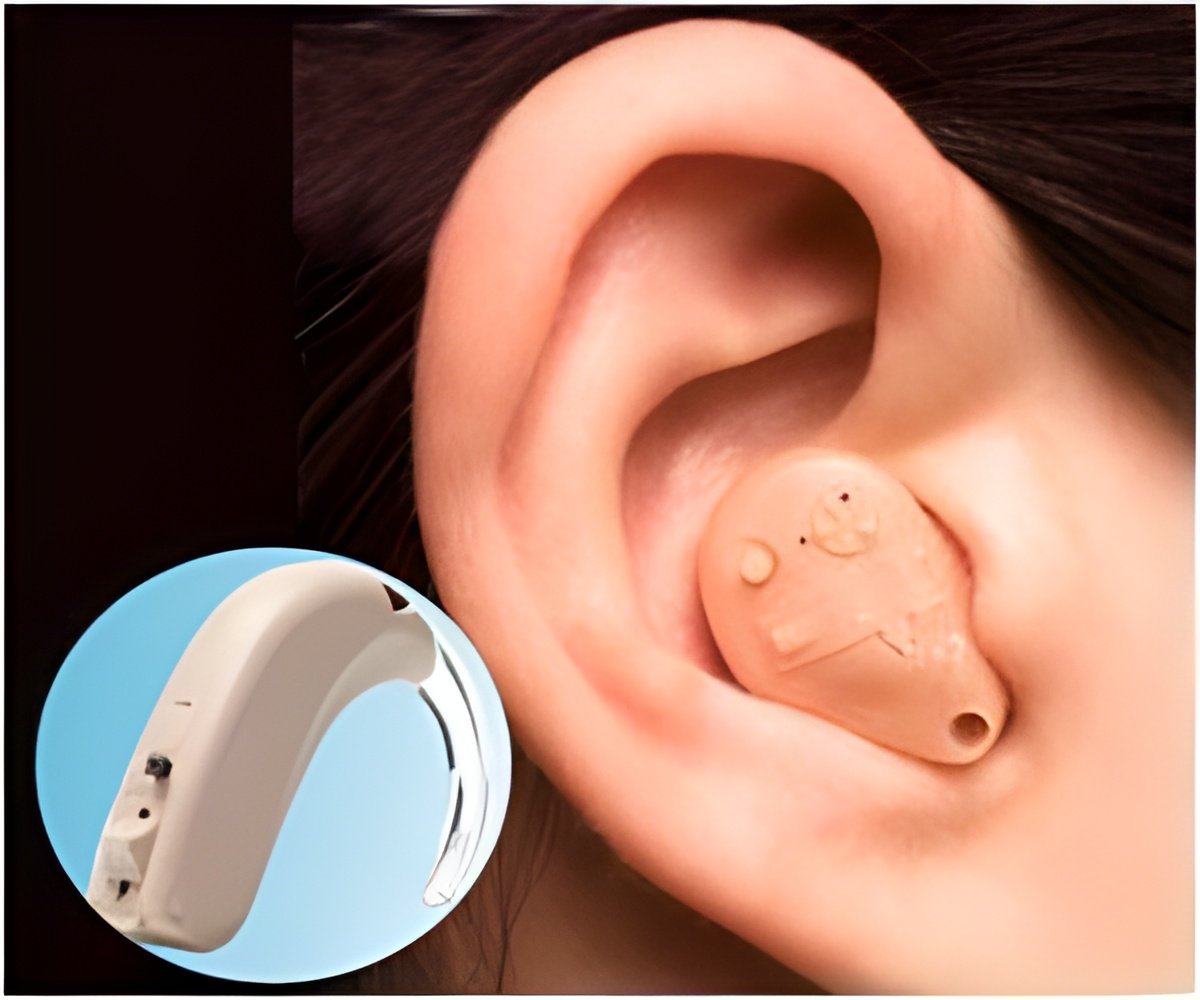
A cochlear implant is a device that electronically stimulates the auditory nerve to restore hearing in people with profound hearing loss. Conventional cochlear implants are made up of an external unit with a microphone and sound processer to pick up and encode sound, and an internal unit that is seated in the skull and connected to an electrode array inserted into the cochlea. The external unit raises concerns in some individuals with social stigma and has limited use in the shower or during water sports.
"In addition to the cosmetic aspect of an invisible cochlear implant, a potential major functional benefit is that it can facilitate sound localization. Our system relies on a sound sensor located in the middle ear so that the user can benefit from directional cues provided by the auricle and ear canal. Conventional cochlear implants detect sound by a microphone located outside of the ear so that important directional cues are lost," said Konstantina Stankovic, M.D., Ph.D., Mass. Eye and Ear otologist who co-led the study with Anantha Chandrakasan, Ph.D., MIT head of Electrical Engineering and Computer Science. "Our long-term goal is to develop a fully implantable cochlear implant. To facilitate that development, we have developed the SoC and tested it in ears of human cadavers."
In addition, the SoC was designed to require lower power sound processing and auditory nerve stimulation to enable operation from an implantable battery that is wirelessly recharged once daily.
This project was a collaboration between the following researchers at MIT, Harvard Medical School and Mass. Eye and Ear: Marcus Yip, Rui Yin, Hideko Heidi Nakajima, Konstantina Stankovic and Anantha Chadrakasan.
More details about the SoC project are included in a paper describing the finding.
Advertisement
Source-Eurekalert











